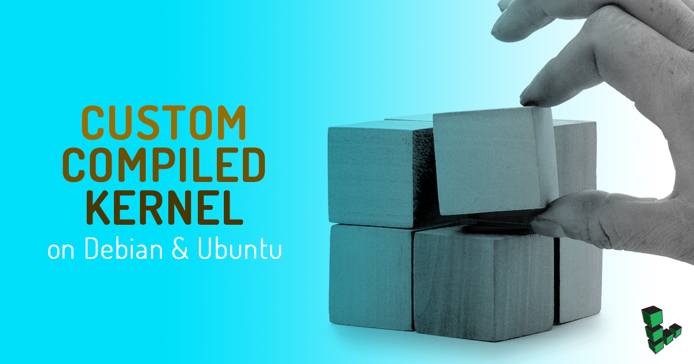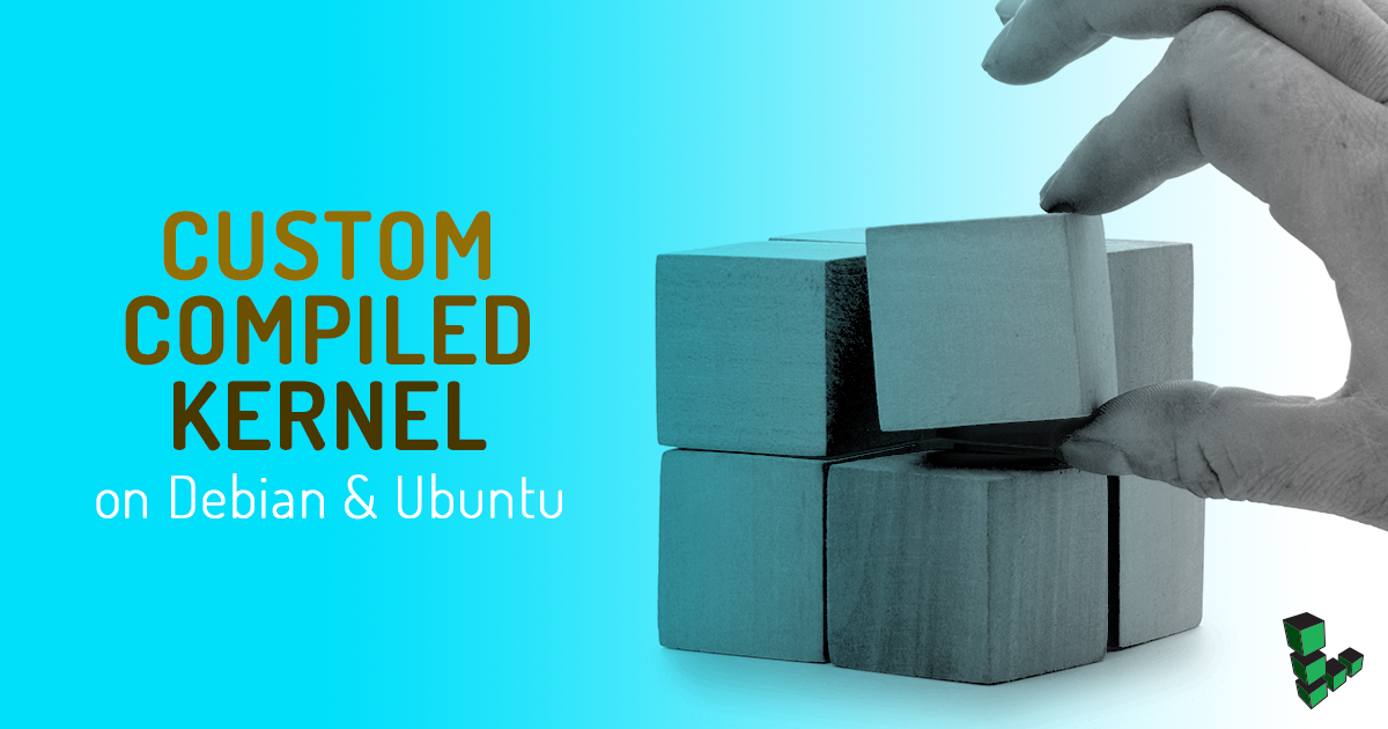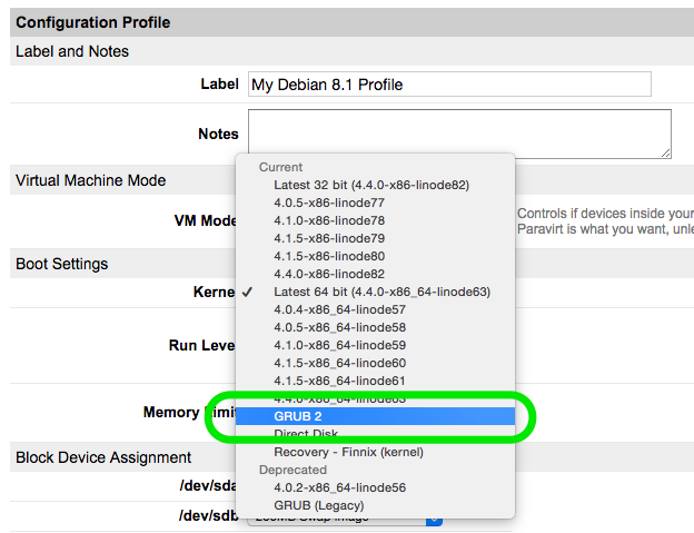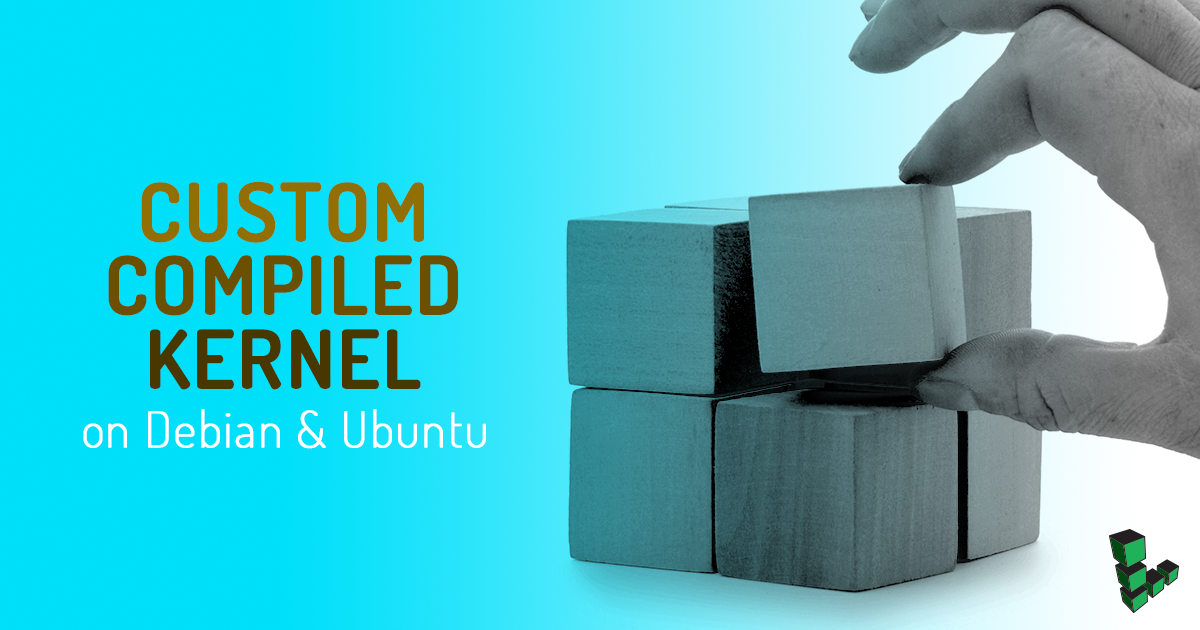Custom Compiled Kernel on Debian & Ubuntu


Compiling your own Linux kernel is useful if you need to enable or disable certain kernel features that are not available in Linode-supplied or distribution-supplied kernels. For example, some users desire SELinux support, which is not enabled in stock Linode kernels, and may not be enabled in some distribution-supplied kernels.
If you’d rather run a distribution-supplied kernel instead, please follow our guide for Running a Distribution-Supplied Kernel.
Prior to these instructions, follow the steps outlined in our
Getting Started guide. Then, log in to your Linode as the root user.
Prepare the System
Update your package repositories and installed packages, and install additional packages needed for compiling and running your kernel:
apt-get update && apt-get upgrade apt-get install -y build-essential libncurses5-dev gcc libssl-dev grub2 bcNote
When installingGRUB, you’ll be asked which disk images you’d like GRUB to configure. Unless you’re planning on using the Direct Disk option in the Linode Configuration Manager, this is not required.Since some distributions install a pre-compiled kernel package into the
/boot/directory along with their development package, avoid confusion later by removing any existing files there. Warning, this will delete everything within the/boot/directory without asking for confirmation:rm -rf /boot/*
Compile and Install the Kernel
Download Kernel Sources
Download the latest 4.x kernel sources from kernel.org. A conventional location to download to is
/usr/src/:cd /usr/src wget https://cdn.kernel.org/pub/linux/kernel/v4.x/linux-4.7.tar.xzExpand the archived file and change directories:
tar -xvf linux-4.7.tar.xz cd linux-4.7
Configure the Kernel
The kernel must be properly configured to run within the Linode environment. Some required configuration options may include:
CONFIG_KVM_GUEST=y
CONFIG_VIRTIO_PCI=y
CONFIG_VIRTIO_PCI_LEGACY=y
CONFIG_SCSI_VIRTIO=y
CONFIG_VIRTIO_NET=y
CONFIG_SERIAL_8250=y
CONFIG_SERIAL_8250_CONSOLE=y
We recommend that you start with a kernel configuration (config) from a running Linode kernel. All Linode kernels expose their configuration via /proc/config.gz. For example:
zcat /proc/config.gz > .config
make oldconfig
make oldconfig prompts the user to answer any new configuration options not present in the old configuration file.
Changes to the kernel’s configuration can be made with the menuconfig command. Enable any additional options, making sure to leave filesystem support (likely ext3 or ext4) compiled into the kernel (not configured as a module). For example, to enable SELinux support, check the option “Security options –> NSA SELinux Support” in the configuration interface:
make menuconfig
Once your configuration options are set, exit the configuration interface and answer “y” for yes when asked whether you would like to save the new kernel configuration.
Compile the Kernel
Compile and install the kernel and modules:
make deb-pkgThe
make deb-pkgcommand will create five deb packages in /usr/src/ that you will need to install:dpkg -i linux-*.debEdit
/etc/default/gruband add or change the following variables to match. Comment or remove any lines starting withGRUB_HIDDEN, and if the word splash appears in the lineGRUB_CMDLINE_LINUX_DEFAULT, remove it. There will be other variables in this file, but we are only concerned with those listed below:- File: /etc/default/grub
1 2 3 4 5 6 7GRUB_TIMEOUT=10 GRUB_DISABLE_LINUX_UUID=true GRUB_CMDLINE_LINUX="console=tty1 console=ttyS0,19200n8 net.ifnames=0" GRUB_SERIAL_COMMAND="serial --speed=19200 --unit=0 --word=8 --parity=no --stop=1" GRUB_TERMINAL=serial GRUB_GFXPAYLOAD_LINUX=text GRUB_DISABLE_OS_PROBER=true
Update the bootloader:
update-grub
Configure the Linode
In the Linode Dashboard, click Edit next to your Configuration Profile (usually named after the version of Linux installed).
Under Boot Settings Click on the Kernel drop-down menu, and select GRUB2:

Click Save Changes. You can now reboot the Linode. We suggest opening a LISH or GLISH session first, so you can monitor the boot process and troubleshoot if necessary.
Note
You may need to runcp /boot/grub/unicode.pf2 /boot/grub/fonts/for the boot menu to properly display in GLISH. Your Linode will still boot, assuming there are no configuration issues, without this command.
Congratulations, you’ve booted your Linode using a custom-compiled kernel!
This page was originally published on






